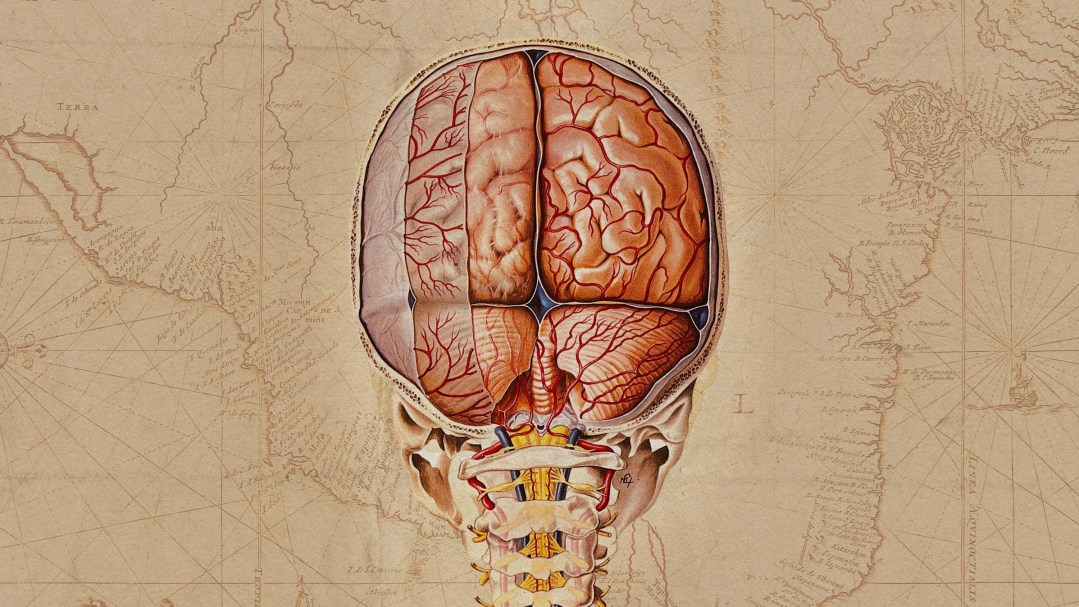Scientists have recently drafted an incredibly detailed map of the human brain
Originally published by Cassandra Willyard on October 12, 2023
Color lithograph of the rear cross-section of a brain and spine superimposed on an old map. Stephanie Arnett/MITTR | Wellcome Collection
This article first appeared in The Checkup, MIT Technology Review's weekly biotech newsletter.
A massive
suite of papers offers a high-res view of the human and non-human primate
brain.
When scientists first looked at brain tissue under a microscope, they saw an impenetrable and jumbled mess. Santiago Ramon y Cajal, the father of modern neuroscience, likened the experience to walking into a forest with a hundred billion trees, “looking each day at blurry pieces of a few of those trees entangled with one another, and, after a few years of this, trying to write an illustrated field guide to the forest,” according to the authors of The Beautiful Brain, a book about Cajal’s work.
Today, scientists have a first draft of that guide. In a set of 21 new papers published across three journals, the teams report that they've developed large-scale whole-brain cell atlases for humans and non-human primates. This work, part of the National Institutes of Health BRAIN Initiative, is the culmination of five years of research. “It's not just an atlas,” says Ed Lein, a neuroscientist at the Allen Institute for Brain Science and one of the lead authors. “It's really opening up a whole new field, where you can now look with extremely high cellular resolution in brains of species where this typically hasn't been possible in the past.”


Comments
Post a Comment